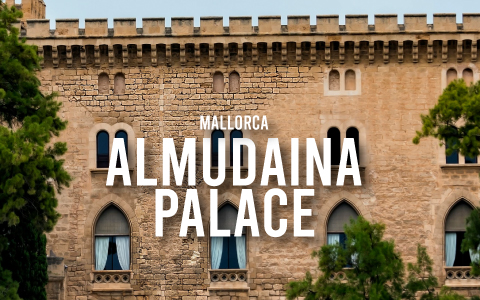
Almudaina Palace, Mallorca: Royal Majesty and Moorish Heritage
In the heart of Palma de Mallorca, the Almudaina Palace (Palacio Real de la Almudaina) is one of the most striking symbols of the island. With its commanding position beside the Palma Cathedral (La Seu), the palace offers breathtaking views of the Bay of Palma and an immersive journey through the diverse and layered local history. Indeed, the elegant blend of Islamic and Gothic styles captures the essence of the island’s transformation through time.
A Palace with a Story: From Moors to Monarchs
The Almudaina Palace dates back to the 10th century, when it was originally built as a Muslim Alcázar (fortified palace) by the Moors who ruled Mallorca at the time. The name “Almudaina” comes from the Arabic al-mudayna, which means “citadel” or “fortress.” The palace was not built in a random location, but in a spot overlooking the sea, perfect for making it a strategic military and administrative center.
In 1229, the Christian conquest of Mallorca by King James I of Aragon marked a turning point in the island’s history. The Alcázar was transformed into a Christian royal residence, maintaining many of its original Islamic features while integrating Gothic and later Renaissance elements. Under James II of Mallorca, the palace was further expanded and refurbished to suit the tastes and needs of a Christian monarch.
Today, the palace is officially a residence of the Spanish royal family, though it is primarily used for ceremonial purposes.
Why Visit the Almudaina Palace?
There are many reasons why you should visit the Almudaina Palace.
As we have said, the palace showcases a blend of Moorish, Gothic, and Renaissance architecture, creating a unique visual experience. Once there you can admire the vaulted ceilings, stone columns, intricate carvings, and symmetrical courtyards which reflect the layers of influence over the ages. Beside architecture, walking through the halls is like stepping into the footsteps of monarchs, governors, and noble guests who once resided there. Imagining those past times is easy since the palace houses a collection of period furniture, Flemish tapestries, paintings, and artifacts from various centuries, which give insight into the artistic and cultural life of its former residents.
But there is more. The palace’s elevated position provides gorgeous panoramic views of Palma’s harbor and the Mediterranean Sea, making it a photographer’s dream.
Highlights of the Visit to the Almudaina Palace
Here are some of the key areas and features to look out for during your tour:
- The Courtyard of Arms (Patio de Armas): A central open space surrounded by arcades, often the first stop in the palace. It served as a military and administrative hub during its Islamic phase.
- The King’s Hall (Sala del Rey): This large hall is notable for its Gothic arches and massive tapestries. It was used for official receptions and is one of the most visually impressive rooms.
- Royal Apartments: Though sparsely furnished, the rooms offer a glimpse into royal life. The décor reflects the medieval and early modern periods, showcasing a blend of simplicity and grandeur.
- The Royal Chapel of Santa Ana: A small but beautiful chapel built in Gothic style, where Christian monarchs could worship. It represents the shift from Islamic to Christian influence after the Reconquista.
- Tower of Homage (Torre del Homenaje): This tall defensive structure offers a commanding view of the coastline and a reminder of the palace’s origins as a fortress.
- The King’s Garden (S’Hort del Rei): located just outside the palace, it is a tranquil space with Moorish-inspired fountains and shaded paths, perfect for a relaxing stroll before or after your visit.
Practical Information for Visitors
If you’re planning to visit the Almudaina Palace, here’s what you need to know.
The palace is open year-round but with different hours depending on the season. From April to September, it is open from Tuesday to Sunday, 10:00 AM – 7:00 PM, while from October to March:, again from Tuesday to Sunday, 10:00 AM – 6:00 PM. Admission is charged.
You can plan a guided tour or take advantage of the audio guides to get the most out of the visit, especially for understanding the context of the rooms and artifacts. You can combine your visit with stops to nearby attractions such as Palma Cathedral, Parc de la Mar, and the Arab Baths to deepen your understanding of the city’s layered past.



